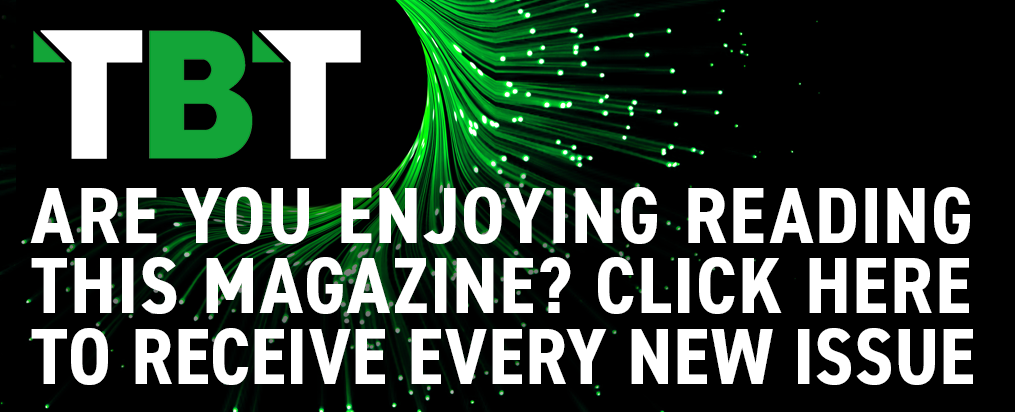MANAGED DESKTOP (DAAS) AND
THE FUTURE OF THE WORKPLACE
Image credit: © ra2 studio - stock.adobe.com
Should channel partners be concerned by the raft of new DaaS announcements from vendors, or see it as an opportunity to tap into new revenues?
Earlier this year Citrix announced the general availability its new cloud-based managed desktop-as-a-service (DaaS) offering. It is the latest vendor to jump on board a movement that is gaining traction across organisations of all sizes.
DaaS is a way for organisations to consume desktops and applications on a subscription basis. Citrix’s offering, Citrix Managed Desktops (CMD), for example is hosted in Microsoft Azure and provides virtual Windows desktop and application environments on any device, offered as monthly subscriptions on a per-user basis.
At the time of writing, VMware too is readying itself to announce a new DaaS offering called Managed Desktops Solution, with the desktops running on VMware Cloud on Amazon AWS. In addition, Microsoft is almost ready to start rolling out its Windows Virtual Desktop service, which virtualises Windows 7, 10, Office 365 ProPlus apps and other third-party software by running them in Azure virtual machines.
But when CMD was first announced in May, it was reported that some partners were worried it might compete with their Citrix desktop and application services. There were similar concerns voiced after Microsoft announced its Microsoft Managed Desktop (MMD) 12 months ago, which brings together Microsoft 365 Enterprise, device as a service, and cloud-based device management from the vendor.
So what is behind this shift to DaaS, and should channel partners really be worried by this latest crop of vendor offerings?


“There is a lot of ‘smoke and mirrors’ from some vendors and channel who have not made the required portfolio investments so ensure there is a material service wrap. Not just a commercial construct so the customer has a number of options that add incremental levels of value”
ROBERT STANLEY - DIRECTOR OF WORKPLACE SERVICES, COMPUTACENTER
SHIFTS IN THE WORKPLACE
There have been several sizeable cultural and technological shifts in the workplace which have been driving the adoption of DaaS.
Today more employees are working remotely or hot-desking rather than being desk-bound, with the growth of the gig economy only generating more freelance and contract workers. The modern workforce also has high expectations of their employers when it comes to technology – 71 percent of millennials say that the degree to which an organisation embraces technology and innovation will influence where they work. Meanwhile, a new generation of employees – Generation Z – is about to enter the workplace, also with specific demands of their employer, including the ability to work from any location, across any device.
“Because of higher levels of mobile and remote working, teams are now more geographically dispersed, which in turn fosters closer partnerships with suppliers and partners,” Microsoft’s VP of UK commercial partners, Joe Macri, tells TBT.
“This means that it’s essential to give employees the tools and solutions they need that can help them work better together, from any location and from any device. This gives them choice to work from a partner location or to quickly transition between projects as they move from one partner site to the other. Cloud-based collaboration tools are an essential ingredient, as these can enable people to work together in real time or choose to video conference and add a human touch to their interactions.”
In addition, cyberattacks are increasing in frequency and complexity – 2019 is on course to be the “worst year on record” for data breaches – prompting a need for security and compliance. Customers are demanding complete protection for this constantly evolving threat landscape, without compromising their productivity.
One new report shows that SMBs are still expected to do more with less when it comes to IT security implementation, deployment and management. Eighty percent of SMBs rank IT security as a top business priority, but 29 percent of less than $1,000 on IT security annually.
The same survey shows that 40 percent of small and midsize businesses operate in at least five physical locations, including remote access workers, and 72 percent have up to three-quarters of their IT infrastructure deployed in the cloud.
Considering these challenges, many organisations still struggle to manage the technologies needed for connectivity, productivity, collaboration and security. “These tools are much harder to configure, deploy, and monitor than is often suggested by the utopian ideals set forth by the vendor marketing machines,” says Robin Ody, channel analyst at Canalys.
“The ability to work on things in real time, collaborating with colleagues around the world, be it in document, voice or video is having a major impact. The one thing that holds back this progress, besides the technological capabilities, are the attitudes and budgets of employers…For partners, the skill is the same as it always has been; being able to predict which customer can benefit from which solution, and package in a way that delivers business value.”
DAAS VS. VDI
It is easy to mix up DaaS and virtual desktops (VDI), but there are some significant differences between the two. As with any as-a-service offering, organisations may opt for managed DaaS to avoid the cost and hassle of building and maintaining their own VDI offering, particularly if they are small businesses with limited in-house resources or budget. DaaS is also useful when the customer needs to easily scale the number of users up or down – in busy or seasonal periods, for example.
“VDI and DaaS have been an important part of outsourced corporate helpdesk services offered by enterprise partners for a long time. Whether it be with vendors like Amazon, Citrix, Microsoft, VMware or others some form of managed desktop will always be of use to organisations for a variety of reasons, either due to cost strategy, logistics, or partner expertise. Where partners see opportunity can depend on which of those areas they focus on” says Ody.
“If a customer is a large corporate entity and needs to outsource its desktop management to a partner, there is clearly value in having someone take some of the headache away and perform that completely independently or in conjunction with the internal IT team. In that case the difficulty of configuring and running an enterprise environment was a good value-add and VDI was the solution.
For smaller businesses DaaS can be of use, particularly if partners are combining the deployment and configuration of PCs and software to that business with IT asset disposal services or going even further and developing a refurbishment business.”
“It’s best to think of DaaS as a VDI solution that someone else manages, looking after platform updates,” says Craig Gordon, head of Microsoft distributor Vuzion. “VDI solutions require the partner to manage more than DaaS solutions, typically having to spend time focusing on ‘feeding and watering’ the VDI platform; this is a natural progression like moving from IaaS to PaaS or SaaS. I mean who want to manage email servers on premises for example?”
“By commoditising the service the vendors take away business from partners by convincing end-customers they don’t need the partners’ added value, and they normalise ‘quick and easy’ MDaaS for the next generation of business owners. It’s the McDonald-isation of desktop services; not good, but available.”
ROBIN ODY - CHANNEL ANALYST, CANALYS0
MANAGED DAAS: CHANNEL OPPORTUNITY…
IDC forecasts a 32.1 percent compound annual growth rate for DaaS, while Gartner forecasts that 50 percent of new VDI users will be deployed on DaaS platforms in 2019.
Vuzion’s Gordon believes managed DaaS as an opportunity that channel partners will struggle to ignore.
“Microsoft’s DaaS solution provides great opportunity for managed service providers, systems integration, consultancy and additional software from independent software vendor partners,” he tells TBT. “The power of Azure means management of the overall solution is much less time consuming and deployment time is massively reduced, allowing partners to focus on continual service improvement and customisation.”
“Managed desktop has always been a big opportunity for the channel as it directly impacts the employee engagement and adoption of ‘more productive’ ways of working,” agrees Robert Stanley, director of Workplace Services at Computacenter. “It is particularly relevant today for two reasons: the war for talent and the need to transform the workplace operating model to as-a-service.”
Microsoft is also using the end of support for Windows 7 in January 2020 to encourage partners to pursue migration opportunities around DaaS. The vendor has said it expects that about 30 percent of all Windows PCs that customers migrate to will feature Device as a Service (DaaS) plans.
Microsoft itself notes that the opportunity to provide technology as a service to customers is becoming more and more popular. “Whether it’s hardware or software, this kind of service helps both customers and partners by offering support in harder to navigate areas, such as security, and ensures a strong collaboration between them,” says Macri.
“Security is a perfect example of the benefits that managed services can offer partners. The security landscape for enterprises is becoming more complex and harder to navigate. What often happens is that customers outsource to specialists when it comes to ensuring security is part of their business strategy, so that they can have the space to focus on their core business. Managed services can come in to play here and enable partners to offer this much-needed support to their customers.”
While not specifically addressing any potential threat to partners with its MMD service, Macri says that for partners, the opportunities around DaaS are numerous, “and managed services can be a way for them to also feel confident in offering support on niche areas, such as security, working more collaboratively both with companies such as Microsoft, as well as with their customers. “
Computacenter’s Stanley notes that while Microsoft’s offering does overlap with partners’ own service portfolios, it is currently aimed at the midmarket “and it is our job to evolve our services to add incremental value.”

“Security is a perfect example of the benefits that managed services can offer partners. The security landscape for enterprises is becoming more complex and harder to navigate. What often happens is that customers outsource to specialists when it comes to ensuring security is part of their business strategy, so that they can have the space to focus on their core business.”
JOE MACRI - VP OF UK COMMERCIAL PARTNERS, MICROSOFT
OR THREAT?
So is Microsoft threatening its partner base with their new managed service? In short, yes, says Canalys’ Ody – but he says the likes of Microsoft Managed Desktop or Amazon WorkSpaces were always likely to be an issue for partners, due to their size and economies of scale which partners don’t possess.
However, partners can still add value, he says with differentiated services from the basic Microsoft or Amazon packages which are standard ‘off-the-shelf’ offers. For example, expertise – Microsoft doesn’t offer Line of Business (LoB) application support, which many companies would want – or local presence and support, which he says neither Microsoft nor Amazon is keen to offer due to cost constraints.
“It’s tricky; by commoditising the service the vendors take away business from partners by convincing end-customers they don’t need the partners’ added value, and they normalise ‘quick and easy’ MDaaS for the next generation of business owners. It’s the McDonald-isation of desktop services; not good, but available,” he says.
IT Lab Group recently announced its status as an Authorised Microsoft Managed Desktop Partner, providing end-user support service alongside the MMD service. The company’s director of business performance and consulting, Dan Coleby, disagrees, claiming the new managed service is an opportunity to add more value to its client base.
He tells TBT: “We don’t think what Microsoft is offering should threaten how partners deliver services to their customers. Microsoft Managed Desktop showcases the best end-user experience working on a modern Windows 10 device, connected to Microsoft cloud services, and backed by Microsoft.”
In addition, he notes that MMD is a Windows 10 EUC service only. “There is still a requirement for numerous other items to be supported, that Microsoft are not presently supporting in MMD,” he says.
These include Office 365 – it’s a pre-requisite to have email in Exchange Online but support for Microsoft’s productivity suite is not supported by the MMD team – as well as Identity Management, where MMD makes use of Azure Active Directory, it doesn’t manage the configuration for customers.
In addition, partners can offer MDM/MAM as management of mobile iOS and Android devices is outside the MMD scope, and LAN/WLAN/WAN, print, traditional infrastructure or NoC/SoC – all these are required to benefit from MMD, but again not a part of the MMD service.

“We don’t think what Microsoft is offering should threaten how partners deliver services to their customers. There is still a requirement for numerous other items to be supported, that Microsoft are not presently supporting in MMD”
DAN COLEBY - DIRECTOR OF BUSINESS PERFORMANCE AND CONSULTING, IT LAB GROUP
PITFALLS TO AVOID
There are some common pitfalls for partners to avoid when selling DaaS, however. “Make sure you can deliver what you are selling as there is a lot of ‘smoke and mirrors’ from some vendors and channel who have not made the required portfolio investments and ensure there is a material service wrap, not just a commercial construct so the customer has a number of options that add incremental levels of value,” says Stanley.
The solution needs to focus on what ‘persona’ types the client has, says Gordon, who advocates designing and position the solution from the user backwords. For example, he notes that most organisations have at least 3-4 types of ‘IT user’. “I would expect to see an offering from a partner that meets the needs of those types of users and is priced for different types. Solutions need to be pre-packaged yet customisable – Microsoft365 and Azure Virtual Desktop easily allow that – partnering is key, adding in applications, or increased service delivery.”
WHAT'S NEXT?
So far Microsoft has only made its MMD service available in North America, Australia and the UK. “Will it roll this out further, is it able to, and how will this affect partners?” asks Ody.
The analyst also adds we should “almost certainly” expect more consolidation in the partner base, particularly with Microsoft and Amazon consulting partners.
“Ensuring a secure managed platform exists across all client devices allowing organisations to focus on delivering value at higher levels of the stack such as improved productivity and more effective engagement of users so accelerating the ability to add incremental value to the organisation,” says Stanley.
With end of support for Windows 7 and the growing shift towards everything-as-a-service, the channel should not ignore the impact that DaaS may have on their business.
Says IT Lab’s Coleby: “A successful, innovative and forward-thinking MSP should be continually looking to add value to the supply chain, especially through customer and vendor relationships. Those threatened by a change in the market may be unable, or unwilling, to adapt and in our view this makes them the wrong choice for an ever-evolving marketplace.”





